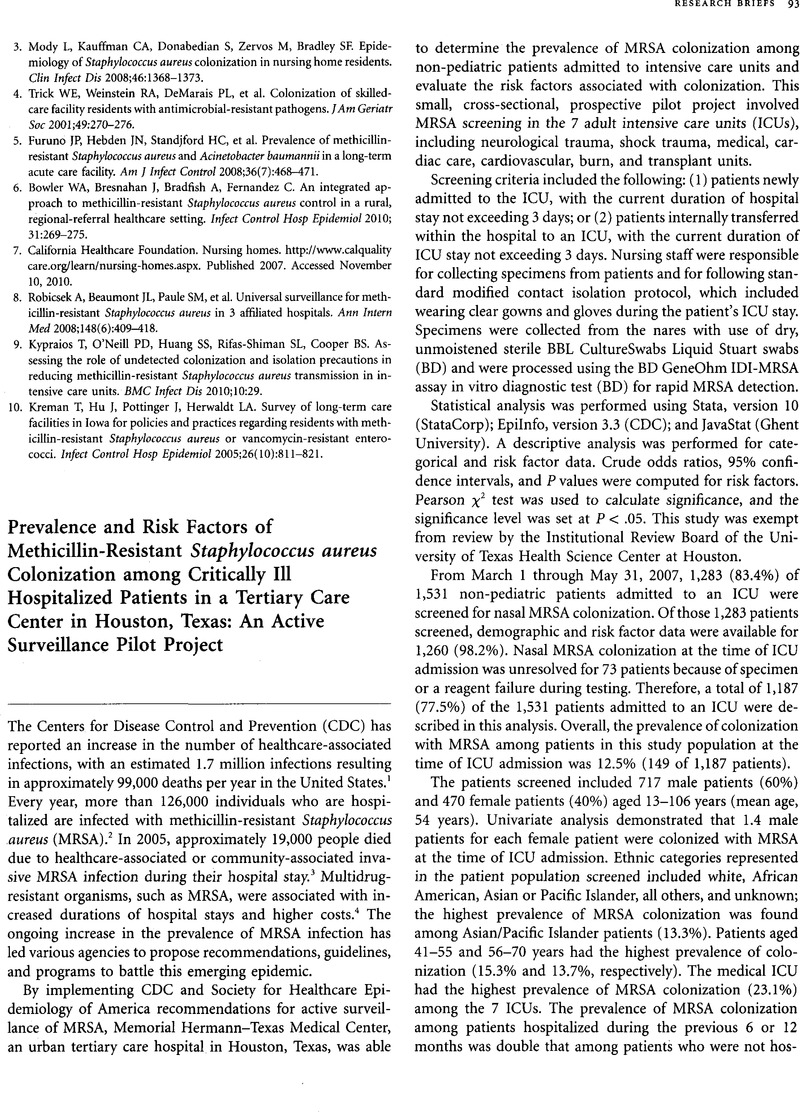Crossref Citations
This article has been cited by the following publications. This list is generated based on data provided by Crossref.
Akulian, Jason A.
and
Metersky, Mark L.
2013.
Antibiotic resistance patterns in medical and surgical patients in a combined medical-surgical intensive care unit.
Journal of Critical Care,
Vol. 28,
Issue. 4,
p.
347.
Ziakas, Panayiotis D.
Anagnostou, Theodora
and
Mylonakis, Eleftherios
2014.
The Prevalence and Significance of Methicillin-Resistant Staphylococcus aureus Colonization at Admission in the General ICU Setting.
Critical Care Medicine,
Vol. 42,
Issue. 2,
p.
433.
Searcy, R.J.
Jankowski, C.A.
Johnson, D.W.
and
Ferreira, J.A.
2018.
Evaluation of sedation-related medication errors in patients on contact isolation in the intensive care unit.
Journal of Hospital Infection,
Vol. 98,
Issue. 2,
p.
175.





